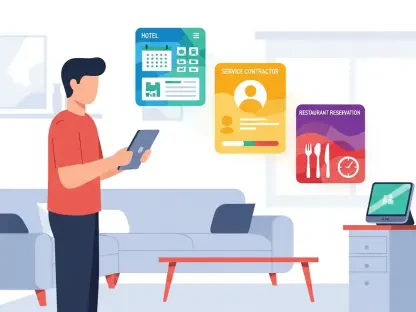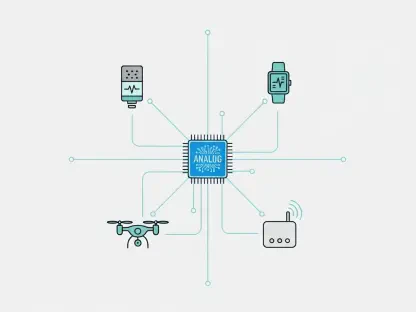Artificial intelligence (AI) is making significant strides in the legal field, particularly in automating and optimizing the traditionally labor-intensive and detail-oriented process of contract review. By leveraging advanced technologies like machine learning, natural language processing (NLP), and optical character recognition (OCR), AI is transforming the way legal documents are dissected, interpreted, and analyzed. This technological evolution not only enhances efficiency but also promises a future where legal professionals can focus more on strategic tasks rather than painstakingly reviewing documents manually.
The core functionality of AI in contract review integrates several cutting-edge technologies. NLP plays a crucial role in enabling AI to comprehend and interpret human language used within contracts. This allows AI to understand context, identify key terms, and recognize nuances specific to legal language. ML, on the other hand, utilizes vast amounts of contract data to improve AI’s capability to identify commonalities and flag atypical clauses. Through continuous learning from a large dataset of contracts, the AI becomes adept at spotting patterns and anomalies, ensuring accurate and thorough contract analysis. OCR technology completes the triumvirate by converting images of documents, like handwritten or scanned contracts, into digital text. This makes all documents accessible for digital analysis, ensuring none are excluded due to their format.
The Core Technologies Behind AI Contract Review
AI in contract review integrates several advanced technologies. NLP is fundamental for enabling AI to comprehend and interpret human language within contracts. This capability allows AI to identify key terms and clauses while understanding the context and nuances specific to legal language. For example, NLP can differentiate between varied contextual uses of similar terms, providing a more precise interpretation that aids in reliable contract analysis.
ML leverages vast amounts of contract data, continuously improving AI’s ability to recognize commonalities and flag atypical clauses. By learning from extensive datasets, the AI becomes more proficient at identifying patterns and anomalies, crucial for accurate contract analysis. These ML algorithms can detect even subtle variations in clause phrasing, which might be missed by human reviewers. As a result, AI not only enhances the precision of contract reviews but also expedites the process significantly.
OCR technology rounds out the core technologies by converting images of documents into digital text. This is particularly useful for analyzing handwritten or scanned contracts, making them accessible for digital analysis. OCR ensures that no document is overlooked due to its format, adding to the comprehensive nature of AI-driven contract review. By converting all forms of documents into a digital, searchable format, OCR allows AI to perform a thorough analysis on any document, whether typed, handwritten, or scanned. Collectively, these technologies empower AI to transform the contract review process by making it significantly faster, more accurate, and inclusive of all document types.
Cost Savings and Efficiency
One of the primary benefits of AI contract review is the substantial cost savings achieved by reducing the need for human labor in routine contract analysis. This financial efficiency allows companies to redirect resources toward areas requiring higher-level legal expertise. By automating the monotonous and time-consuming aspects of contract review, AI not only cuts costs but also frees up legal professionals to engage in more complex and strategic legal tasks. This redistribution of resources can lead to enhanced overall productivity within legal departments.
AI offers precision and reliability by minimizing human error, yielding consistent and near-perfect document reviews. Critical details are meticulously evaluated, ensuring that key aspects of contracts are not overlooked. The reduction in errors not only saves time but also reduces the risk of costly legal mistakes, which can have far-reaching consequences. Furthermore, the speed at which AI can review contracts is another major benefit. Tasks that might take a human several hours or even days to complete can be accomplished by AI in a fraction of the time. This rapid analysis facilitates quicker decision-making, allowing businesses to operate more agilely and respond promptly to new opportunities and challenges.
Additionally, the financial savings extend beyond the immediate reduction in labor costs. The enhanced precision and reliability of AI-driven contract reviews can reduce the likelihood of disputes and litigation, further safeguarding a company’s financial interests. By identifying potential issues early in the contract review process, AI can help prevent costly legal battles down the line. This proactive approach to risk management underscores the value of integrating AI into legal operations, highlighting its role not just as a cost-saving tool but as a strategic asset in corporate governance and risk mitigation.
Enhanced Risk Identification
AI enhances risk identification by flagging potentially problematic clauses related to data privacy, indemnification, and liability limitations, among others. This proactive approach can significantly reduce an organization’s future legal and financial exposure. By thoroughly analyzing contracts, AI can pinpoint areas of concern that may pose risks if left unaddressed, allowing companies to take preemptive measures. In highly regulated industries like finance and healthcare, AI’s ability to assist in maintaining compliance with relevant laws and standards is crucial for avoiding fines and adapting to changing regulations.
AI’s advanced algorithms keep pace with the ever-evolving legal landscape, ensuring that contracts are evaluated against the latest legal requirements. This continuous updating process helps organizations stay compliant, mitigating the risk of regulatory breaches that could lead to severe penalties. AI’s risk identification capabilities are not limited to finding problematic clauses; it can also provide insights into the overall risk profile of a contract. By analyzing the contract’s content holistically, AI enables legal professionals to make more informed decisions about whether to proceed with a deal, renegotiate terms, or abandon potentially risky agreements altogether.
Moreover, AI-powered risk assessment tools can offer suggestions for mitigating identified risks, providing actionable recommendations to enhance contract safety. This function empowers legal teams to take swift corrective actions, thereby safeguarding the organization’s interests. The detailed risk profiles generated by AI help in constructing robust risk management strategies, ensuring that legal teams have a comprehensive understanding of potential vulnerabilities. As a result, companies can navigate complex contractual landscapes with heightened confidence and security, backed by the insights provided by AI-driven analysis.
Future Trends in AI Contract Review
As AI technology matures, it is expected to handle more complex, multi-document analysis, providing a holistic view of relationships between contracts, leases, or policies. This advancement will allow legal professionals to gain deeper insights and conduct more comprehensive reviews. The ability to analyze multiple documents simultaneously can reveal interconnected risks and opportunities that might be missed in isolated reviews.
Blockchain technology is also anticipated to play a crucial role in enhancing security and transparency, particularly through smart contracts – self-executing contracts with terms embedded in code. Future AI systems might manage and oversee these smart contracts for better efficacy, ensuring that they are executed as intended without the need for human intervention. This integration of blockchain and AI will provide an additional layer of security, reducing the chances of fraud or misinterpretation of contractual terms.
Another anticipated trend is the increased focus on elucidating AI’s decision-making processes. Enhanced clarity in AI’s reasoning is likely to build trust among legal professionals. As user interfaces of AI platforms become more intuitive and user-friendly, even those without formal legal training can leverage these tools to gain legal insights. This transparency will not only facilitate broader adoption of AI in the legal field but will also promote confidence in AI-driven decisions. Legal professionals and clients alike will benefit from understanding how AI reaches its conclusions, fostering a collaborative environment where technology and human expertise complement each other.
Democratization of Legal Expertise
Artificial intelligence (AI) is making major advancements in the legal industry, especially in automating and optimizing the traditionally time-consuming and meticulous process of contract review. By using advanced technologies such as machine learning (ML), natural language processing (NLP), and optical character recognition (OCR), AI is revolutionizing how legal documents are examined, interpreted, and analyzed. This advance in technology not only improves efficiency but also allows legal professionals to concentrate more on strategic tasks rather than on detailed manual reviews.
AI’s functionality in contract review involves integrating several state-of-the-art technologies. NLP is essential for helping AI comprehend and interpret the human language within contracts, allowing it to understand context, identify key terms, and grasp legal nuances. ML, in contrast, relies on vast contract data to enhance AI’s ability to spot commonalities and unusual clauses. Continuously learning from large datasets of contracts, AI becomes skilled at recognizing patterns and exceptions, ensuring precise contract analysis. OCR technology complements this by transforming images of documents, like handwritten or scanned contracts, into digital text, making them accessible for digital scrutiny and ensuring no document is left out due to its format.









